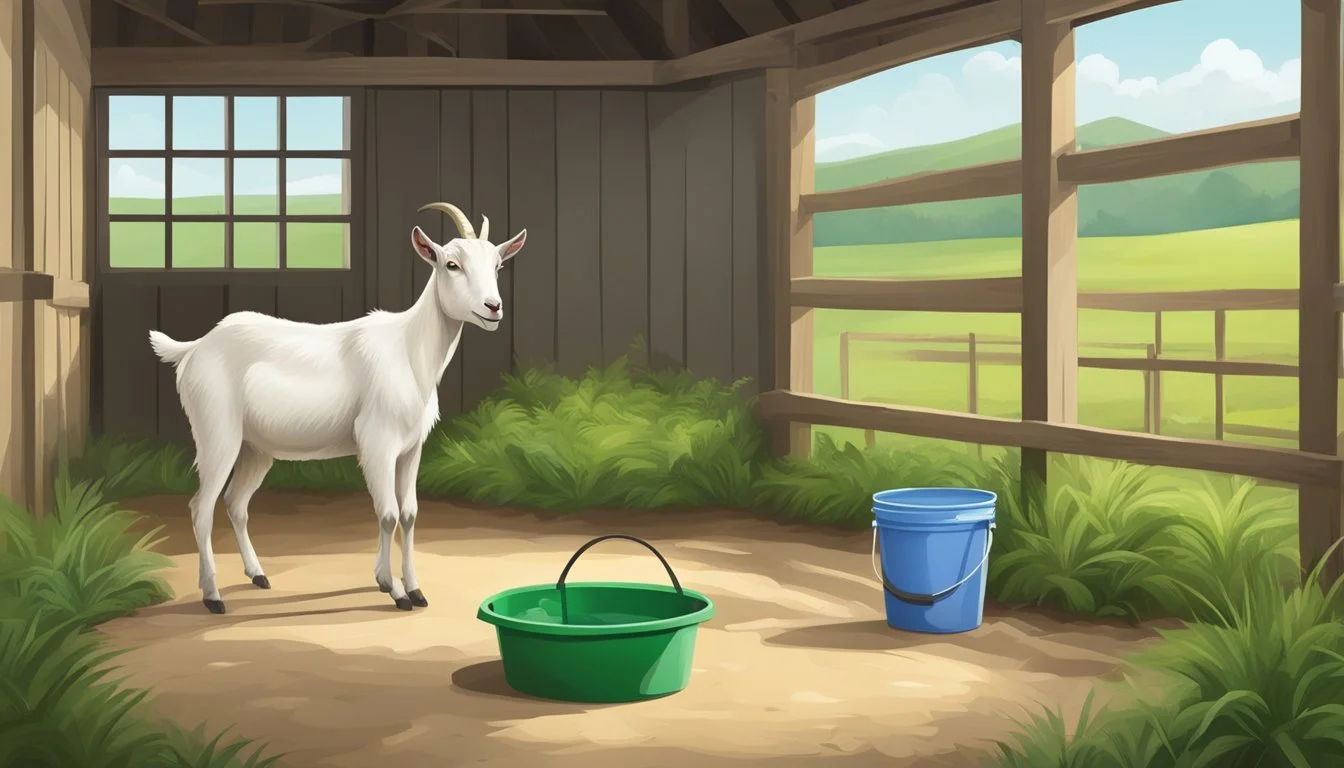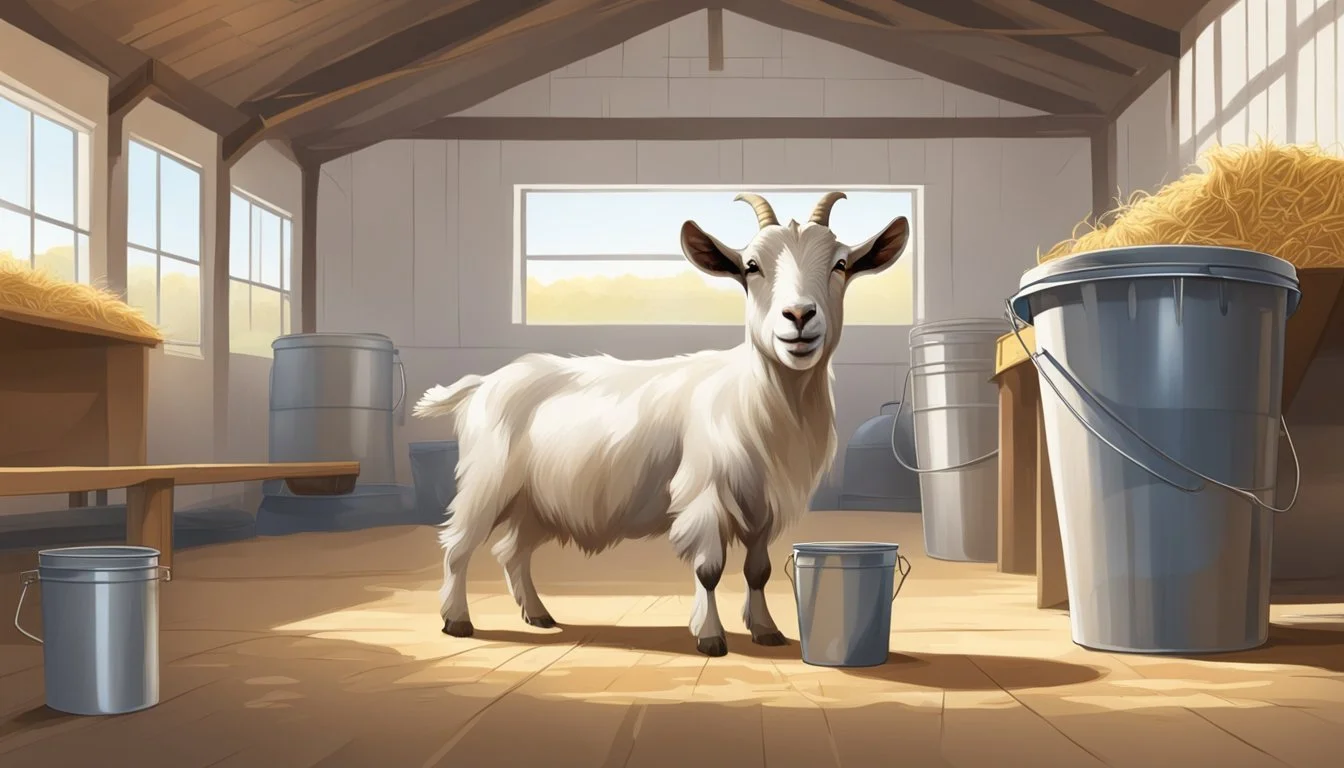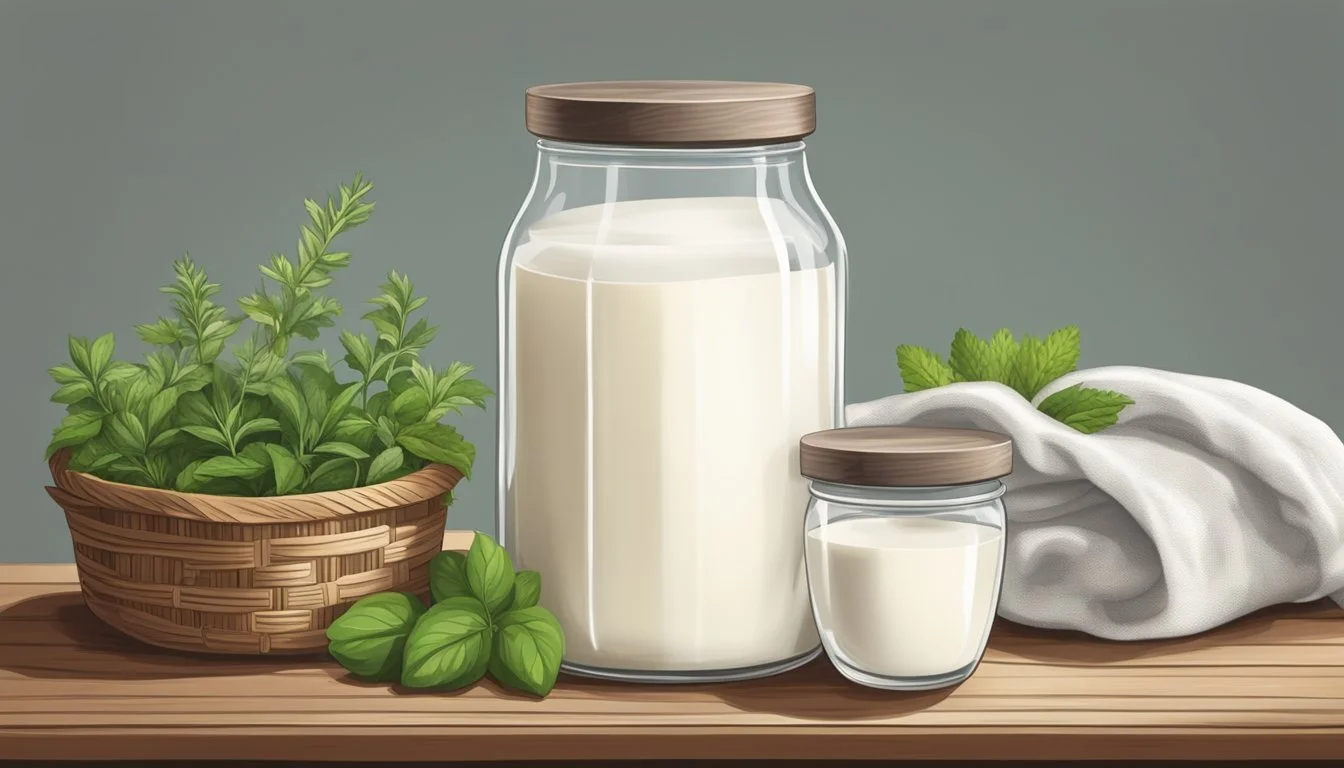How to Keep Your Goat's Milk Tasting Sweet and Fresh
Essential Tips for Quality Dairy
Maintaining the freshness and sweetness of goat's milk requires careful attention to detail and proper handling from the moment it leaves the goat to when it is consumed. Keeping goat's milk tasting its best is not just essential for the enjoyment of the dairy product, but also for its nutritional value. When goat's milk is fresh, it has a creamy texture and a pleasant, mildly sweet flavor, characteristics that can be preserved through certain practices.
Temperature control is pivotal in prolonging the freshness of goat's milk. The milk should be chilled immediately after milking, ideally to temperatures between 35-38 degrees Fahrenheit. This rapid cooling halts the growth of bacteria that can cause the milk to spoil or develop off-flavors.
Cleanliness during the milking process also plays a vital role in the quality of goat's milk. Ensuring that the goats are healthy, their diet is appropriate and that milking equipment and storage containers are impeccably clean will help to keep the milk's naturally sweet taste. Moreover, factors such as the presence of a buck nearby, the goat's environment, and genetics can also influence the flavor profile of the milk, emphasizing the importance of comprehensive dairy management.
Understanding Goat Milk Properties
Goat's milk offers a distinct taste and nutritional profile that varies from cow’s milk, affected by factors such as genetics and butterfat content. It is important to understand these differences, as they can impact both the flavor and the health benefits of the milk produced by dairy goats.
Comparing to Cow’s Milk
Goat’s milk is often preferred for individuals who are lactose intolerant, as it contains slightly less lactose than cow's milk. The flavor of goat's milk can differ significantly from cow milk due to a higher presence of medium-chain fatty acids, such as caprylic, capric, and caproic acid. These fatty acids contribute to the characteristic taste of goat's milk, which some describe as being more "tangy" or "earthy" compared to the often neutral flavor of cow's milk. Additionally, goat’s milk has smaller fat globules, which leads to a creamier texture and makes it easier to digest.
Genetic Factors Influencing Taste
The taste of goat's milk can be influenced by genetics, with certain goat breeds producing milk that is sweeter and less "goaty." Nubian, Alpine, La Mancha, and Saanen are popular dairy goats known for their high-quality milk. However, Nigerian Dwarf goats excel in terms of sweet-tasting milk with high butterfat content, which is ideal for cheese-making and adds a rich, creamy flavor.
Nutrient Profile and Health Benefits
Goat's milk is rich in essential nutrients, including protein, calcium, and vitamin A. The nutrient profile of goat’s milk showcases a well-rounded source of minerals and vitamins critical for maintaining good health:
Protein: Essential for growth and repair of tissues.
Calcium: Vital for strong bones and teeth.
Vitamin A: Important for vision and immune function.
The fatty acids in goat's milk not only add to its unique taste but also provide health benefits. These medium-chain fatty acids are thought to possess antimicrobial properties and contribute to the high levels of butterfat found in goat’s milk, particularly in Nigerian Dwarfs. Regular consumption of goat’s milk provides a good amount of these essential nutrients, making it a valuable addition to a balanced diet.
Best Practices for Goat Keeping
To ensure the production of sweet and fresh-tasting milk, goat keepers must strictly adhere to a set of best practices that encompass diet and nutrition, health maintenance, breeding strategies, environmental management, and understanding the lactation process.
Goat Diet and Nutrition
A goat's diet directly influences milk flavor and butterfat content. For optimal milk taste, provide a balanced diet consisting of quality forage, pasture, and appropriate grains. Incorporating alfalfa—rich in protein and calcium—supports lactation. Supplementing the diet with kelp can add essential trace minerals. A good mix of pasture and feed not only boosts milk quality but also contributes to overall goat health.
Maintaining Goat Health
Consistent health checks and preventive care reduce the risk of mastitis, an infection of the udder that can affect milk taste. Ensuring cleanliness of the living environment and milking equipment is paramount. A healthy goat is less likely to carry a high parasite load or succumb to infections that can taint milk flavor.
Breeding and Genetic Management
Selecting the right bucks and managing genetics for desirable traits can improve the resulting dairy goat's milk yield and quality. Monitor breeding season to enhance genetic lines, focusing on size and milk production traits. Controlling breeding helps in predicting milk production patterns tied to the stage of lactation.
Environmental Considerations
A clean, stress-free environment is essential for keeping goats healthy and productive. Proper shelter, space, and a comfortable climate ensure that goats remain stress-free, which can otherwise negatively affect milk production and taste. Manage the herd's living conditions to provide protection from the elements and predators.
Milk Production and Lactation Phases
Understanding the different stages of lactation is vital for managing milk output. The early lactation period sees a higher volume of milk with lower butterfat. As the lactation cycle progresses, volume may decrease, yet the butterfat content generally increases, giving the milk a distinct flavor. Strategic feeding during these phases can maintain a consistent milk profile.
Milking Procedures and Milk Handling
To ensure the quality and freshness of goat's milk, adhering to meticulous procedures during and immediately after milking is crucial. Proper techniques and sanitary conditions are paramount in maintaining the sweet-tasting flavor profile of the milk and preventing contamination.
Proper Milking Techniques
Before milking, thoroughly clean the goat's udder to prevent bacteria and debris from entering the milk. During milking, use firm but gentle hand motions to avoid stress to the goat and to aid in complete milk letdown.
Immediate Post-Milking Processing
Immediately after milking, chill the milk to around 35-38 degrees Fahrenheit. This can be done by placing the milk into an ice bath or a refrigerator to inhibit bacterial growth. The faster the milk is chilled, the fresher it will taste.
Avoiding Off-Flavors
To prevent the goaty flavor, a common off-taste in goat's milk, it's essential to keep goats away from strong-flavored foods like onions, garlic, and chives before milking. Also, filtering the milk through a milk filter helps to remove any impurities that could affect the taste.
Equipment and Cleaning
Use only food-grade stainless steel or glass jars for collecting and storing milk, as plastic containers can harbor odors and bacteria. Cleaning all equipment immediately after use ensures no residue is left that could spoil subsequent milkings.
Understanding Milk Contamination
Contamination can result from improper handling, dirty equipment, or from the goat itself, potentially leading to milk spoilage or diseases like mastitis. Regular health checks and cleanliness drastically reduce the risk of contamination by bacteria, lactic acid, and unwanted enzymes.
Storing and Preserving Goat Milk
Proper storage techniques are crucial for maintaining the quality and freshness of goat's milk. Utilizing the right methods can significantly extend the shelf life and ensure the milk remains sweet and fresh for consumption.
Chilling and Refrigeration
Rapid chilling is essential immediately after goat's milk is obtained. It should be refrigerated at temperatures between 35-38 degrees Fahrenheit to slow bacterial growth and maintain freshness. Glass jars are often recommended for storing goat's milk in the refrigerator, as they help preserve the milk's natural flavor and prevent absorption of other flavors.
Freezing Goat Milk
For longer-term preservation, freezing goat's milk is an effective method. It should be poured into zipper-top freezer bags or plastic containers, leaving space at the top as the milk will expand when frozen. This allows the milk to be kept for several months while retaining much of its taste and nutritional quality.
Pasteurization Benefits
Pasteurization can increase the safety and shelf life of goat's milk by destroying harmful bacteria. This process involves heating the milk to a specific temperature for a set period of time. For those who prefer to consume raw milk, however, skipping pasteurization to maintain the milk’s natural enzymes and probiotics is an option, provided meticulous cleanliness is observed during milking and storing.
Selecting Storage Containers
Cleanliness and material are crucial when selecting storage containers for goat's milk. Airtight, sanitized glass jars are preferred over plastic, as they won’t impart any unwanted flavors and maintain the milk's quality better. Whatever the choice, ensuring that containers are sterilized before use is key to preventing contamination.
Extending Freshness and Shelf Life
To maximize the shelf life of refrigerated raw goat's milk, the "cold chain" should remain unbroken, meaning the milk is kept consistently cold from the moment it's milked until it's consumed. Using store-bought goat milk, observe the expiration date and keep it refrigerated. For fresh milk, consumption within 5-7 days is ideal for best quality and taste.




